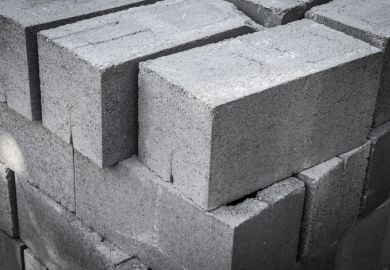Academics faced with a pile of exam scripts to mark often feel like they have been at it for 10 hours straight and, for some, this may be depressingly close to reality. But researchers who claim to have perfected the art of assessment have calculated that you would, in fact, get much more done if you toiled away for precisely six hours and 44 minutes.
Manel Baucells, associate professor of business administration at the University of Virginia, and Lin Zhao, an assistant professor in mathematics and systems science at the Chinese Academy of Sciences, base their analysis on a “fatigue disutility model” that suggests that fatigue increases with effort and decreases with rest, that working when fatigued is unpleasant, and that fatigue ultimately reduces productivity.
For tasks that involve constant mental concentration, such as marking exams, they say that the optimal solution is to begin and end the day with “on periods” of marking, but to take regular breaks in-between.
Using a series of complex equations – based on an assumption of a maximum rate of six exams marked an hour – Professor Baucells and Dr Zhao estimate that marking exams for 10 hours straight without a break would result in 15 papers being assessed.
However, if academics allow for three breaks during the day, the best strategy would be to work for two hours and three minutes, take a 46-minute break, work for a further hour and 48 minutes, take another 46-minute break, work for an hour and 48 minutes, take a third 46-minute break, and end the day with another two hours and three minutes of work.
This strategy would result in total working time dropping to seven hours and 42 minutes, with between 18 and 19 exams getting marked in that time, according to a working paper, appropriately titled “It is time to get some rest”.
Even better, the pair say, would be working for opening and closing spells of 59 minutes and to mix work and breaks intermittently in the middle, until 10 hours have elapsed. This would result in between 20 and 21 papers getting marked in six hours and 44 minutes of work.
“If you want to maximise productivity in the work day, working fewer hours and taking breaks can increase the total output,” Professor Baucells told Times Higher Education. “It’s commonsensical, but you have to do the maths to verify that it’s the case.”
Professor Baucells said that the original idea for his work came while visiting an academic friend at another university, who set regular alarms to require him to take breaks from marking.
“I’m grading exams now and it’s very tedious,” Professor Baucells added. “So I take lots of breaks, and it makes me think: well, this is OK, so I hope I’ll get more exams [marked] at the end.”
POSTSCRIPT:
Print headline: Breaks make you a better marker
Register to continue
Why register?
- Registration is free and only takes a moment
- Once registered, you can read 3 articles a month
- Sign up for our newsletter
Subscribe
Or subscribe for unlimited access to:
- Unlimited access to news, views, insights & reviews
- Digital editions
- Digital access to THE’s university and college rankings analysis
Already registered or a current subscriber? Login








